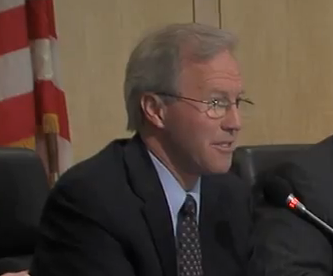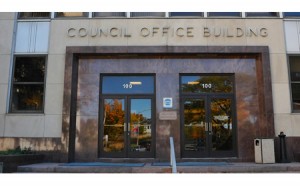
Public Safety Committee to Discuss Emergency Operations Plan
 The Montgomery County Council’s Public Safety Committee will hold a worksession at 9:30 a.m. on Oct. 3 on the County’s Emergency Operations Plan. The multi-discipline and all-hazards plan establishes the overall roles and responsibilities for emergency operations.
The Montgomery County Council’s Public Safety Committee will hold a worksession at 9:30 a.m. on Oct. 3 on the County’s Emergency Operations Plan. The multi-discipline and all-hazards plan establishes the overall roles and responsibilities for emergency operations.
The Public Safety Committee, which is chaired by Phil Andrews and includes Councilmembers Roger Berliner and Marc Elrich, will meet in the Seventh Floor Hearing Room of the Council Office Building at 100 Maryland Ave. in Rockville. The meeting will be televised live by County Cable Montgomery (CCM—Cable Channel 6 on Comcast and RCN, Channel 30 on Verizon). The broadcast also will be streamed through the County Web site at www.montgomerycountymd.gov.
The Office of Emergency Management and Homeland Security (OEMHS) is responsible for developing, maintaining, and distributing the emergency operations plan. The plan is reviewed periodically in order to incorporate new state, federal and other guidelines, to add supplementary material or delete outdated material, and to address new or emerging operational issues.
Chris Voss, manager of the Office of Emergency Management and Homeland Security, is among those that will be attending the worksession.
The Public Safety Committee also will receive an update from the Montgomery County Fire and Rescue Service (MCFRS) about the transition to civilian personnel in the Code Compliance unit.
The Fiscal Year 2014 operating budget began a two-year process to civilianize the Code Compliance section, and assumed a savings of $455,299 associated with abolishing nine uniform positions and creating nine civilian positions. In approving the first year budget for this plan, the Public Safety Committee also expressed its intent to receive an update in the fall on the FY14 efforts, and to discuss the intended approach to the second year of this effort in FY15.
The committee has in recent years been very interested in civilianizing this function. Code has gone back and forth in its history, with civilianization in the early 1990s returning to uniformed positions beginning in the late 1990s. In FYI0, a civilianization process was initiated, but the new civilian positions were not filled due to budget restrictions, resulting in a lower overall complement of uniformed employees. In FYI2, fire code inspection responsibilities for new construction were consolidated under the Department of Permitting Services (DPS) with civilian employees, leaving the responsibility for inspections of existing buildings with the uniform employees in MCFRS.

Engage us on Facebook
Follow us on Twitter
Tweets by @mymcmedia